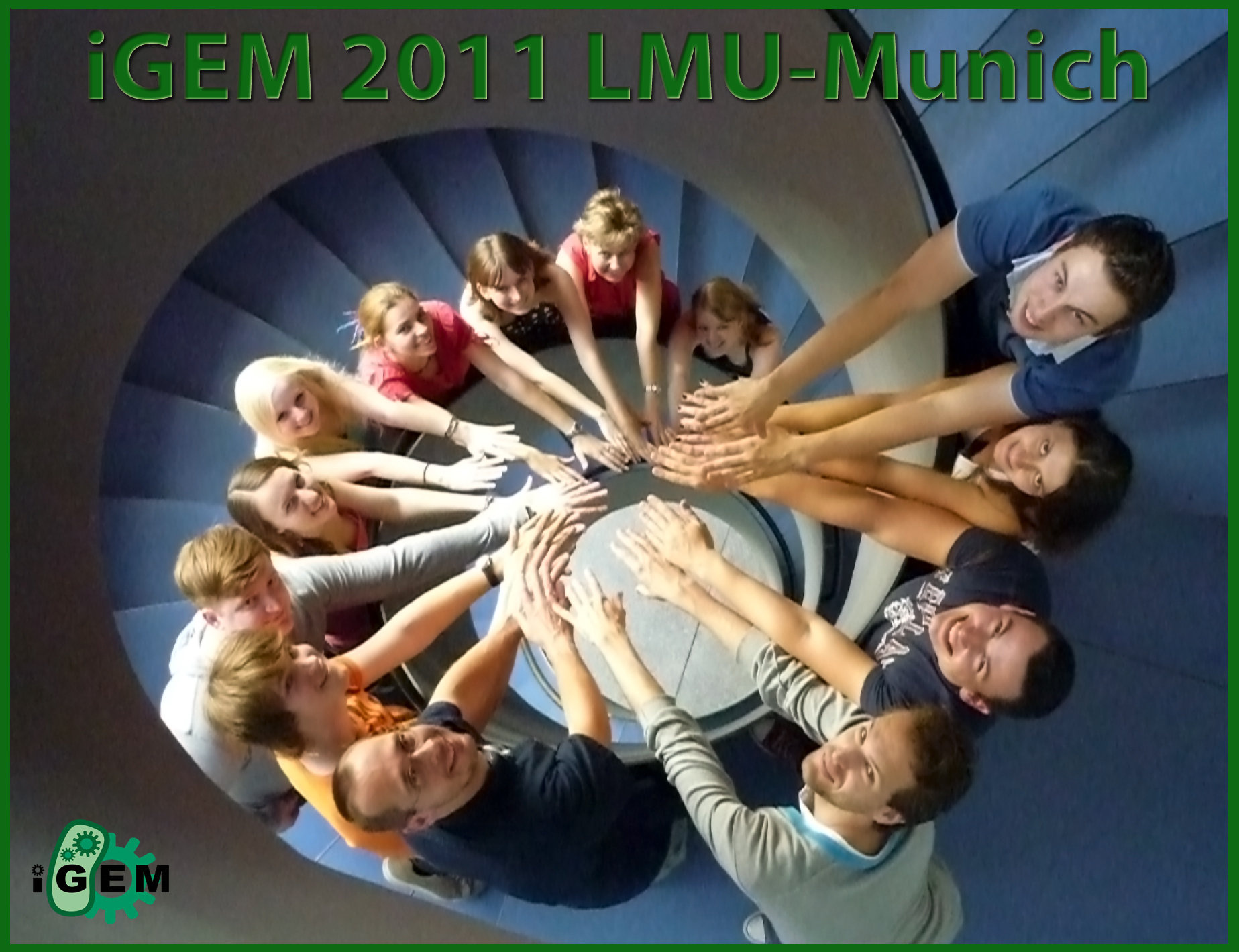Team:LMU-Munich
From 2011.igem.org
(Difference between revisions)
| Line 55: | Line 55: | ||
<div class="rightbox"> [[File:gruppenfoto.jpg|387px|center]] </div> | <div class="rightbox"> [[File:gruppenfoto.jpg|387px|center]] </div> | ||
| - | <div class="leftbox"><b> Our | + | <div class="leftbox"><b> [[Team:LMU-Munich/Project|Our Project:]] </b> We develop a set of bacterial strains that are able to detect the different metals. Via our reporters we also measure their concentration. Our aim is a kit for fast and easy metal detection.</div> |
<div class="leftbox"> [http://www.google.de Primer-Designer] - Totally magnificent! </div> | <div class="leftbox"> [http://www.google.de Primer-Designer] - Totally magnificent! </div> | ||
| - | |||
| - | |||
| - | |||
| - | |||
| - | |||
| - | |||
| - | |||
| - | |||
| - | |||
Revision as of 08:36, 15 September 2011
Our Sponsors:

Promega
 Greiner bio one - Your power for health
Greiner bio one - Your power for health

Carl Roth
 metabion
metabion
 BioTek
BioTek
Our team, from top to bottom: Christopher, Sabine, Benny, (Nikolas), Prof. Mascher, Tobias, Alexej, Laura, Corinna, Jara, Julia, Prof. Jung, Franziska
Our Project: We develop a set of bacterial strains that are able to detect the different metals. Via our reporters we also measure their concentration. Our aim is a kit for fast and easy metal detection.
[http://www.google.de Primer-Designer] - Totally magnificent!
Foto of the LMU faculty for biology from:
http://www.flickr.com/photos/johannesmeyer/5795660299/sizes/l/in/photostream/
 "
"

